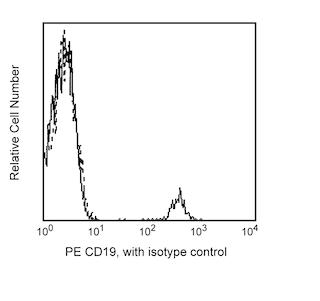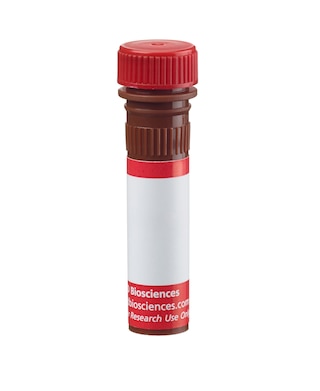-
抗体試薬
- フローサイトメトリー用試薬
-
ウェスタンブロッティング抗体試薬
- イムノアッセイ試薬
-
シングルセル試薬
- BD® AbSeq Assay | シングルセル試薬
- BD Rhapsody™ Accessory Kits | シングルセル試薬
- BD® Single-Cell Multiplexing Kit | シングルセル試薬
- BD Rhapsody™ Targeted mRNA Kits | シングルセル試薬
- BD Rhapsody™ Whole Transcriptome Analysis (WTA) Amplification Kit | シングルセル試薬
- BD Rhapsody™ TCR/BCR Profiling Assays (VDJ Assays) | シングルセル試薬
- BD® OMICS-Guard Sample Preservation Buffer
- BD Rhapsody™ ATAC-Seq Assays
-
細胞機能評価のための試薬
-
顕微鏡・イメージング用試薬
-
細胞調製・分離試薬
-
- BD® AbSeq Assay | シングルセル試薬
- BD Rhapsody™ Accessory Kits | シングルセル試薬
- BD® Single-Cell Multiplexing Kit | シングルセル試薬
- BD Rhapsody™ Targeted mRNA Kits | シングルセル試薬
- BD Rhapsody™ Whole Transcriptome Analysis (WTA) Amplification Kit | シングルセル試薬
- BD Rhapsody™ TCR/BCR Profiling Assays (VDJ Assays) | シングルセル試薬
- BD® OMICS-Guard Sample Preservation Buffer
- BD Rhapsody™ ATAC-Seq Assays
- Japan (Japanese)
-
Change country/language
Old Browser
Looks like you're visiting us from {countryName}.
Would you like to stay on the current country site or be switched to your country?
BD Pharmingen™ Alexa Fluor™ 647 Biosimilar Anti-Human CD20 Rituximab297
クローン Rituximab297.rMAb (also known as Rituximab N297A Biosimilar.rMAb)
(RUO)





Two-color flow cytometric analysis of Human CD20 expression on Human peripheral blood lymphocytes. Human whole blood was stained with PE Mouse Anti-Human CD19 antibody (Cat. No. 555413) and with either Alexa Fluor™ 647 Human IgG1 (N297A), κ Isotype Control (Cat. No. 569961; Left Plot) or Alexa Fluor™ 647 Human Anti-Human CD20 (Rituximab N297A Biosimilar) antibody (Cat. No. 569959/569960; Right Plot). After staining, the cells were treated with 1× BD Pharm Lyse™ Lysing Buffer (Cat. No. 555899) to lyse erythrocytes. The bivariate pseudocolor density plot showing the correlated expression of CD20 (or Ig Isotype control staining) versus CD19 was derived from gated events with the forward and side light-scatter characteristics of viable lymphocytes. Flow cytometry and data analysis were performed using a BD LSRFortessa™ X-20 Cell Analyzer System and FlowJo™ software.

Multiparameter flow cytometric analysis of Human CD20 expression on Human peripheral blood leucocytes. Human whole blood was stained with either Alexa Fluor™ 647 Human IgG1 (N297A), κ Isotype Control (Cat. No. 569961; Left Plot) or Alexa Fluor™ 647 Human Anti-Human CD20 (Rituximab N297A Biosimilar) antibody (Cat. No. 569959/569960; Right Plot). After staining, the cells were treated with 1× BD Pharm Lyse™ Lysing Buffer (Cat. No. 555899) to lyse erythrocytes. The bivariate pseudocolor density plot showing the correlated expression of CD20 (or Ig Isotype control staining) versus side light-scatter (SSC-A) signals was derived from gated events with the forward and side light-scatter characteristics of viable leucocyte populations. Flow cytometry and data analysis were performed using a BD LSRFortessa™ X-20 Cell Analyzer System and FlowJo™ software.


BD Pharmingen™ Alexa Fluor™ 647 Biosimilar Anti-Human CD20 Rituximab297

BD Pharmingen™ Alexa Fluor™ 647 Biosimilar Anti-Human CD20 Rituximab297

Regulatory Statusの凡例
Any use of products other than the permitted use without the express written authorization of Becton, Dickinson and Company is strictly prohibited.
Preparation and Storage
推奨アッセイ手順
BD® CompBeads can be used as surrogates to assess fluorescence spillover (compensation). When fluorochrome conjugated antibodies are bound to BD® CompBeads, they have spectral properties very similar to cells. However, for some fluorochromes there can be small differences in spectral emissions compared to cells, resulting in spillover values that differ when compared to biological controls. It is strongly recommended that when using a reagent for the first time, users compare the spillover on cell and BD® CompBeads to ensure that BD® CompBeads are appropriate for your specific cellular application.
Product Notices
- Please refer to www.bdbiosciences.com/us/s/resources for technical protocols.
- Alexa Fluor® 647 fluorochrome emission is collected at the same instrument settings as for allophycocyanin (APC).
- Caution: Sodium azide yields highly toxic hydrazoic acid under acidic conditions. Dilute azide compounds in running water before discarding to avoid accumulation of potentially explosive deposits in plumbing.
- This reagent has been pre-diluted for use at the recommended Volume per Test. We typically use 1 × 10^6 cells in a 100-µl experimental sample (a test).
- For fluorochrome spectra and suitable instrument settings, please refer to our Multicolor Flow Cytometry web page at www.bdbiosciences.com/colors.
- An isotype control should be used at the same concentration as the antibody of interest.
- This product is provided under an intellectual property license between Life Technologies Corporation and BD Businesses. The purchase of this product conveys to the buyer the non-transferable right to use the purchased amount of the product and components of the product in research conducted by the buyer (whether the buyer is an academic or for-profit entity). The buyer cannot sell or otherwise transfer (a) this product (b) its components or (c) materials made using this product or its components to a third party or otherwise use this product or its components or materials made using this product or its components for Commercial Purposes. Commercial Purposes means any activity by a party for consideration and may include, but is not limited to: (1) use of the product or its components in manufacturing; (2) use of the product or its components to provide a service, information, or data; (3) use of the product or its components for therapeutic, diagnostic or prophylactic purposes; or (4) resale of the product or its components, whether or not such product or its components are resold for use in research. For information on purchasing a license to this product for any other use, contact Life Technologies Corporation, Cell Analysis Business Unit Business Development, 29851 Willow Creek Road, Eugene, OR 97402, USA, Tel: (541) 465-8300. Fax: (541) 335-0504.
- Please refer to http://regdocs.bd.com to access safety data sheets (SDS).
- Alexa Fluor™ is a trademark of Life Technologies Corporation.
- For U.S. patents that may apply, see bd.com/patents.
- Source of all serum proteins is from USDA inspected abattoirs located in the United States.
関連製品






The Rituximab297.rMAb (also known as, Rituximab N297A Biosimilar.rMAb) is a research grade chimeric recombinant human IgG1, kappa antibody that specifically recognizes the extracellular domain of human CD20 similarly to the therapeutic Rituximab antibody. The Rituximab297.rMAb uses the same variable region sequences as Rituximab, combined with constant region sequences derived from consensus sequences of human IgG1, kappa. The asparagine at position 297 of the constant heavy chain has been replaced with alanine (N297A) to further reduce Fc receptor interactions of this reagent. Rituximab triggers target cell death through multiple mechanisms including complement-dependent cytotoxicity (CDC), antibody-dependent cellular cytotoxicity (ADCC), and apoptosis. The therapeutic Rituximab has been approved to treat human B cell malignancies, autoimmune disorders, and transplant rejection. CD20 is a 33-37 kDa, unglycosylated four-transmembrane phosphoprotein with a cytoplasmic N-terminus and C-terminus that is encoded by MS4A1 (Membrane-spanning 4-domains, subfamily A, member 1). CD20 is expressed on pre-B-cells, naive and activated B cells, memory B cells, and at lower levels on a small subset of T cells but is absent from plasmablasts and plasma cells. It is also expressed on most malignant B cells and CD20-positive T-cell lymphomas. CD20 functions in mediating calcium transport and B cell activation, differentiation, and survival.
The Rituximab297.rMAb is intended for research use only. It is not intended for use in therapeutic or diagnostic procedures for humans or animals.
Development References (10)
-
Almasri NM, Duque RE, Iturraspe J, Everett E, Braylan RC. Reduced expression of CD20 antigen as a characteristic marker for chronic lymphocytic leukemia. Am J Hematol. 1992; 40:259-263. (Biology).
-
Brekke OH, Sandlie I. Therapeutic antibodies for human diseases at the dawn of the twenty-first century.. Nat Rev Drug Discov. 2003; 2(1):52-62. (Biology). View Reference
-
Cragg MS, Walshe CA, Ivanov AO, Glennie MJ. The biology of CD20 and its potential as a target for mAb therapy. Curr Dir Autoimmun. 2005; 8:140-174. (Biology). View Reference
-
Deans JP, Li H, Polyak MJ. CD20-mediated apoptosis: signalling through lipid rafts. Immunology. 2002; 107:176-182. (Biology).
-
Golay J, Zaffaroni L, Vaccari T, et al. Biologic response of B lymphoma cells to anti-CD20 monoclonal antibody rituximab in vitro: CD55 and CD59 regulate complement-mediated cell lysis. Blood. 2000; 95:3900-3908. (Biology).
-
Hultin LE, Hausner MA, Hultin PM, Giorgi JV. CD20 (pan-B cell) antigen is expressed at a low level on asubpopulation of human T lymphocytes. Cytometry. 1993; 14:196-204. (Biology).
-
Kennedy AD, Solga MD, Schuman TA, et al. An anti-C3b(i) mAb enhances complement activation, C3b(i) deposition, and killing of CD20+ cells by rituximab.. Blood. 2003; 101(3):1071-9. (Biology). View Reference
-
Kitamura A, Yamashita Y, Mori N. CD20-positive cytotoxic T cell lymphoma: report of two cases and review of the literature. J Clin Exp Hematop. 2005; 45(1):45-50. (Biology).
-
Uchida J, Hamaguchi Y, Oliver JA, et al. The innate mononuclear phagocyte network depletes B lymphocytes through Fc receptor-dependent mechanisms during anti-CD20 antibody immunotherapy.. J Exp Med. 2004; 199(12):1659-1669. (Biology). View Reference
-
Zola H, Swart B, Nicholson I, Voss E. CD20. In: Zola H. Leukocyte and stromal cell molecules : the CD markers. Hoboken, N.J.: Wiley-Liss; 2007:72.
Please refer to Support Documents for Quality Certificates
Global - Refer to manufacturer's instructions for use and related User Manuals and Technical data sheets before using this products as described
Comparisons, where applicable, are made against older BD Technology, manual methods or are general performance claims. Comparisons are not made against non-BD technologies, unless otherwise noted.
For Research Use Only. Not for use in diagnostic or therapeutic procedures.
Report a Site Issue
This form is intended to help us improve our website experience. For other support, please visit our Contact Us page.